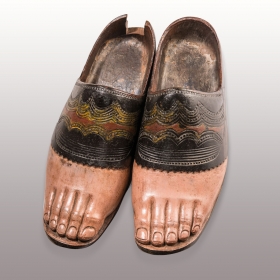Humbert Collection
The Museum of Popular Arts in Laduz (Burgundy) invites you to rediscover through its rich collections of the Trades Wood felling trees by loggers to the expertise of joiners and carpenters.
You will discover the tools, art and traditional working techniques of all these artisans.
The Lumberjack
Keystone of all trades of wood, lumberjack was of a certain prestige. His job required a great physical strength. Depending on the diameter of the tree, he practices égobelage and limbing, before attacking the tree with the ax, the ax or mat.
The Sawyer
Once the felled tree, work sawyers begins to transform wood planks ball. The squaring of the trunk made, it was placed on “the goat”, imposing easel to be sawn. The two artisans were operating in cadence long saw. This hard work was gradually replaced by hydraulic mills.
The Cabinet Woodworker
Born as a corporation of the bursting of the woodworker in 1371, the profession was divided into bailiffs floorers workers ornementistes sculptors, woodworkers. The cabinet woodworker used a variety of tools to perform complex gestures: hand saw, jointer, planer, bouvet, guillaume, scissors, chisel, crankshaft, chignolle, drille, mallet …
The Carpenter
The carpenter has since the Middle Ages a great reputation for knowledge. The complexity of the structure leads to know the rules of mathematics and geometry. His job is to create all kinds of work and woodwork representing different shapes: straight, curved, twisted and devious. Journeymen carpenters all have made masterpieces, exceptional pieces of complexity, in honor of St. Joseph, their patron saint.
The Wheelwright
The wheelwright by trade, born from the split with blacksmiths, was to manufacture carriages and cars to horses and cattle. But their knowledge lies primarily in shaping the hub wheels. He was using resistant wood: elm to the hubs and rims, oak for the spokes of the wheels and ash for stretchers.
The Clog Maker
The clogmaker is an important corporation in the 19th century both the number of artisans that their economic role. Hooves wear very quickly particularly in the countryside to work in the fields. A good clogmaker realizes six or seven pairs of clogs in her day, the size of the log to flatter the hollow hoof and its sculptural decoration with the frog.
The Cooper
Called the Middle Ages barilleur, the cooper differs from foudrier who built his huge casks, the casks, which can contain 350 hectoliters of wine. Cooper uses mostly oak, but chestnut, ash or acacia. One of the peculiarities of its expertise in manufacturing staves, concave or convex blades, guarantors of the hermetic barrel.
The Basket Maker
Secular art, the basket maker works or white wicker willow and gray rye straw for making all kinds of woven objects of everyday use, including for storage (suitcases, baskets …). There are two strands of interleaving techniques, work in full and day to work: in the first, the strands are woven horizontally without spacing between them, and in the second they are evenly spaced.







